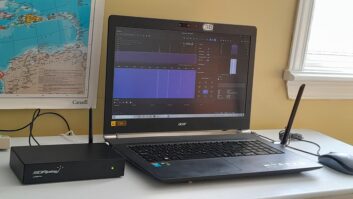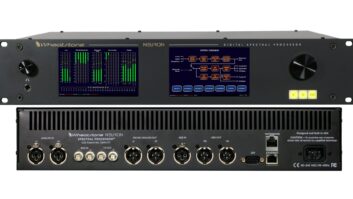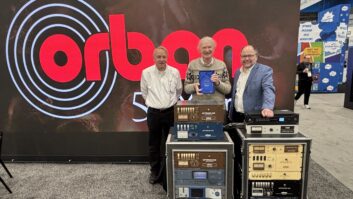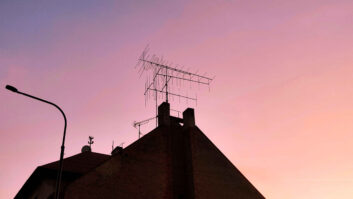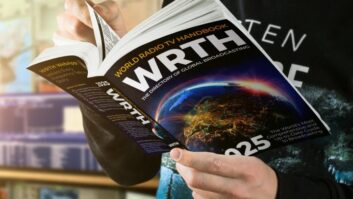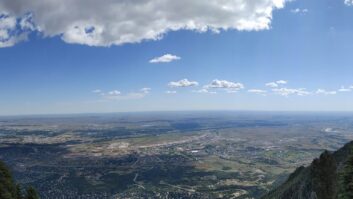Broadcast Group Puts Up Title & Artist; Explores Translator Handoff Capability
Most of Journal Broadcast Group’s radio stations are implementing RDS – 25 of its 28 FMs. I spoke to Vice President of Radio Engineering Andy Laird as part of my occasional series of columns about RDS and radio data, to find out what lessons he’s learned at Journal and what he sees coming.
“We think it’s important piece, and we are rolling it out,” he said of the analog data service. “We use it to add song title and artist and station slogan to the display.”
As a broadcaster, he said, “You’re really looking for what differentiates you from someone else; and if you can add a ‘wow, cool’ factor, this is all part of the perceptual game.
“Frankly, it’s not a big investment for something that is immediately noticeable.”
Underused
RDS had been running on a few stations that the company had purchased. “In some cases the local engineer kept it going, and basically it was just the call letters,” he said.
But Laird said he had been impressed by a seminar two or three years ago at which receiver makers were talking about research on satellite and HD Radio. When they asked focus groups to try satellite receivers and then took the radios away, one of the things listeners missed most was song title and artist.
That finding “blew me, and our management, away,” Laird said. “We thought, ‘Wait a minute, we can do that.'”
Another factor was a competitive one.
“Nothing is more compelling to a corporate mandate than having a traveling executive get in a car and see something on someone else’s station, and not on ours. That added a log to the fire,” he said with a chuckle. So did the buzz generated by satellite radio.
When Journal began exploring RDS, it was pleasantly surprised by how many receivers were in the field.
“We weren’t really aware of how many RDS radios were coming out of Detroit and elsewhere. Lots and lots of cars have RDS in them now. The receiver base was out there.”
Journal is using the FMB80 RDS encoder from Audemat-Aztec at its stations.
Cost/benefit?
Will RDS pay for itself? The most vocal response to date has been from station staff.
“Everyone says, ‘Oh cool, look,'” Laird said. “Can you directly relate that to revenue? Of course not. Can we sell it? We don’t know.”
But Laird says automation suppliers are talking about new interfaces to make those kind of things possible, citing Scott Studios and its new owners dMarc Broadcasting as an example. He also said that this is not a costly project, given the awareness it generates. He estimates his cost, including hardware, monitoring and tuners, at about $5,000 per station.
I asked Laird what problems or challenges they encountered in rolling out RDS.
“Right off the bat, we had to work with our automation hard-disk storage companies to get the interface to work the way we wanted,” he replied. “We chose the Audemat encoder because we thought it gave us the greatest flexibility for doing things.”
Journal operates three audio storage systems: Scott, Maestro and Dalet. “All three have different challenges. Two of the three we’ve mastered; the third we’re working on.”
Laird offers a tip to broadcasters interested in getting into RDS: Talk to your hard-disk vendors and ask what kind of interfaces they have for your situation. As you shop, also ask your RDS vendors if they have clients interfaced to your type of automation, and what kind of software was involved to make it work.
“Getting Audemat talking to the vendors was actually easy, and was part of the way we worked out the interfaces.” He complimented the manufacturer on its personal attention during the rollout, and said the willingness of vendors to talk to one another was an important part of Journal’s experience.
Also don’t underestimate the planning involved.
“I tasked key individuals to deal with this. It actually consumed a lot of their time. We’ve done the spade work, but it took some effort. Once we got the interfaces going, now you put it up and dry run it, to watch in a terminal mode, correct this and that, go through the metadata in every cut in the library,” he said.
For instance, song data had not been entered with the public in mind.
“In some cases we had song title and artists spelled phonetically, on purpose. So we had to change all that. And then after you’ve done that, you throw it up and you’re surprised how different it looks because of spaces and commas and such, to make a sensible display.”
Another reminder: “If you have RDS, don’t forget you’ve got it. It’s another thing you should monitor.”
Scrolling
Journal has experimented with the controversial use of scrolling on the Program Service field, but the Journal company policy is not to scroll song title and artist unless the user pushes the button to see the Radio Text display.
“We agree that we’re a large, deep-pocket industry and don’t want the exposure to possible lawsuits.”
Looking to the future, Laird said he is “very much behind” NRSC efforts to integrate the RDS and HD Radio display experiences, “so as you’re driving around in a weak system, the two systems can blend back and forth without a major change in the display. That work is underway, in its infant stages.” (See story, page 2.)
I asked whether U.S. radio is taking full advantage of RDS, given the many applications that had been touted for it, such as handing off listeners from station to station – or station to translator.
“I’m exploring the handoff idea on KGMG(FM) in Tucson,” he said. “I have a translator within the coverage of the main transmitter that will show the same program codes and station codes, so the receiver can pick whichever one it wants. And the translator is better for a third of the population in Tucson.”
Interestingly, Laird said, Journal’s engineers in Omaha learned by accident about the potential for this kind of RDS use.
“We misunderstood a setup code in the encoder. The operations manager did not want the unique call letters to pop up; he wanted the name, not the call letters. As a result of this misunderstanding, he left that field blank.
“We had four of these things going, and we started getting calls saying, ‘I was listening to KQCH and it popped over to KKCD. What’s going on?'” The receivers were picking from the group’s multiple FMs in Omaha and switching the tuning.
Stations with translators would not be the only beneficiaries. The same functionality could allow, say, a simulcast of three Class A stations in Los Angeles to provide seamless coverage for listeners.
These are the kinds of uses for which RDS was intended, but which have not seen much use in the United States. Expect that to change now that groups large and small are exploring RDS more aggressively.

